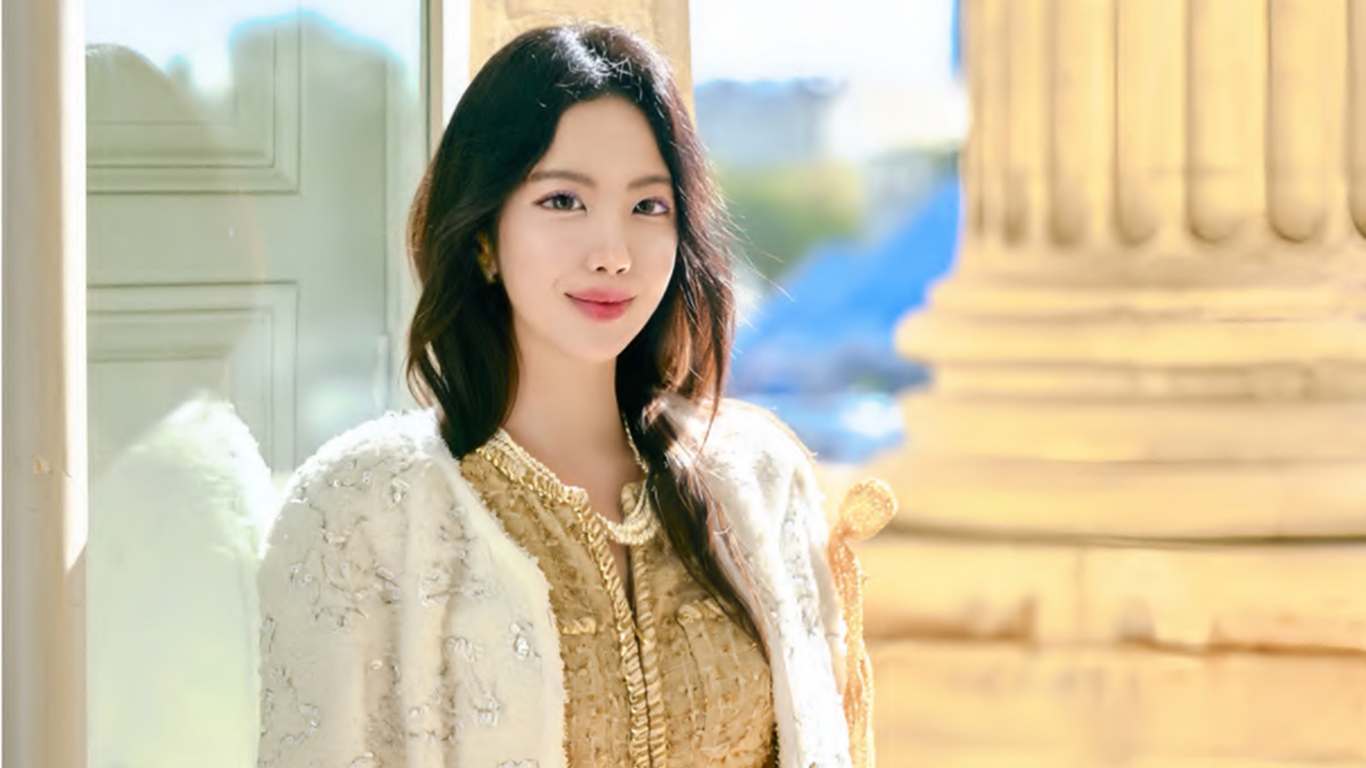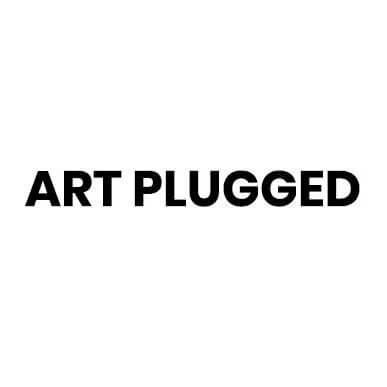From ancient scrolls to contemporary salons, Evangeline Li builds exhibitions that challenge, connect and endure — inviting new ways of seeing and feeling.
There’s a particular silence in some galleries — not the absence of sound, but the presence of something unresolved. Curator and advisor Evangeline Li knows that silence well. She’s spent her career drawing attention to it, curating within it, and, at times, amplifying it until it becomes impossible to ignore.
Li’s work — part curator, part cultural strategist — designs and curates exhibitions that are less about answers than about sustained, deliberate friction. A Ming scroll beside a minimalist sculpture — a couture gown staged in dialogue with a performance score. Li constructs conversations that ask more of us.
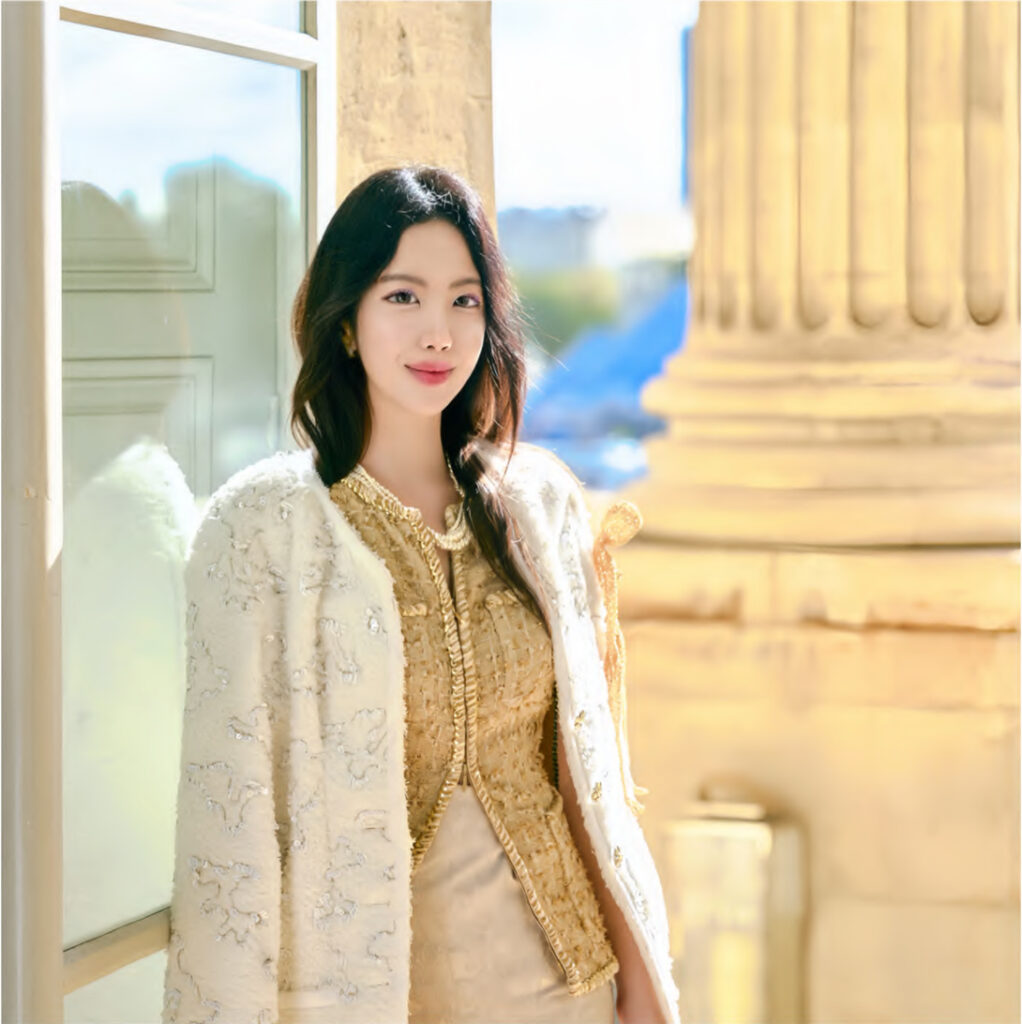
Image courtesy of Evangeline Li
Navigating the space between cultural vision and commercial viability is one of the most intellectually stimulating aspects of my work
Evangeline Li
In an age where curation is often reduced to branding, spectacle, and saving a few posts you like from the doomscroll of digital life, Li insists on something slower, deeper — a search for genuine connection. Her exhibitions — whether housed in storied institutions such as the Victoria and Albert Museum or unfolding within the often community-driven safe spaces of salon gatherings and soundscapes — are structured like inquiries: Who is being seen? Who decides value? What does it mean to listen across cultures, across time?
Li’s language is that of care, but never softness. Her projects are as intellectual as they are emotionally textured — composed not only of artworks, but of tensions: between past and present, visibility and invisibility, cultural memory and market logic.
Now, in her role at Upsilon Gallery, Li brings together six female artists from around the world — Ava Grauls, Diane Chappalley, Epona Smith, Evie Mae Jacobs, Guan Guan, and Hannah Lim — for Sentire: You Are the April Sky, a meditation on intuition, perception, and the fragile ground of identity. The exhibition takes its name from the Italian poet Alda Merini’s idea of sentire — to feel with a force both deeply private and inseparable from the world beyond. Echoes of Lin Huiyin’s poem You Are the April Sky in This World weave through the show, casting the woman as a figure of warmth, renewal and quiet strength — an emblem well suited to the season.
We spoke with Li to learn more about her curatorial practice, her latest exhibition, and the urgent questions that continue to shape her work.
Do you remember your first curatorial project? How did it come about? Were there any unforgettable moments?
Evangeline Li: Yes, my first curatorial project emerged during my early academic years in Taiwan while working with Twin Jade Art Space and National Taiwan Normal University. I was invited to curate a series of exhibitions and educational programmes exploring the intersection of Eastern and Western art histories — from calligraphy to conceptualism, from Tang dynasty ceramics to Duchampian irony. It was the first time I witnessed curation not as a display strategy but as a mode of cultural mediation.
An unforgettable moment was watching a group of students linger over a dialogue between a Ming dynasty scroll and a minimalist sculpture. Their reflections sparked a deeper conviction in me — that curation isn’t just about placement, but about provocation. It was in that moment I began to see the gallery space as a site of exchange, where traditions meet, and questions emerge. That project became the blueprint for my curatorial voice: one deeply committed to cross-cultural translation, artistic friction, and shared narratives between East and West.
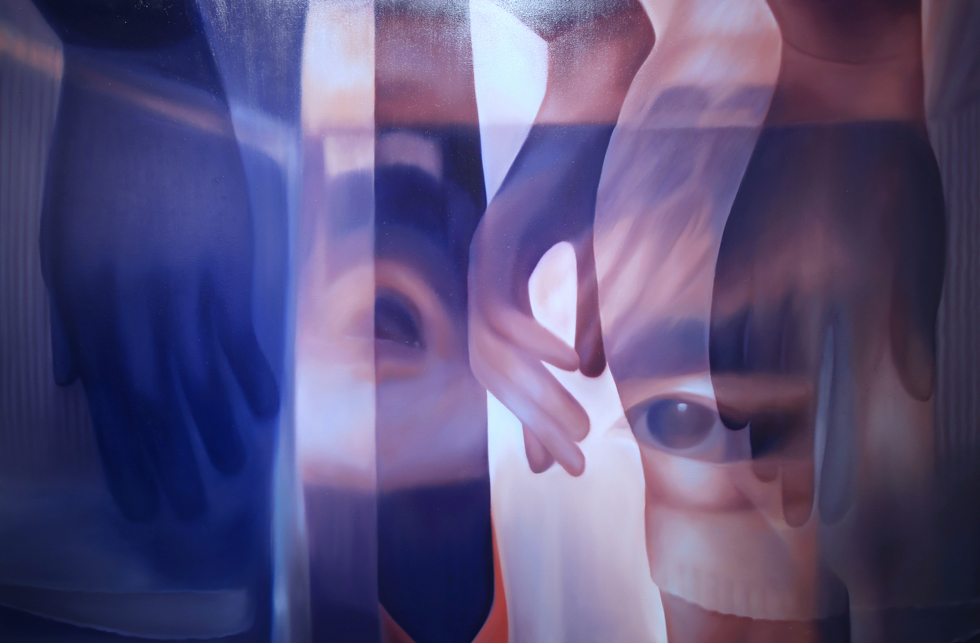
Evie Mae Jacobs
Image courtesy of Upsilon Gallery
What first drew you to curating as a creative and intellectual pursuit? Was there a defining moment when you realised it was your path?
Evangeline Li: My journey into curating wasn’t linear — it was layered, like the exhibitions I now create. Growing up in a family of curator and scholars, I was immersed in the language of art long before I could name it as a profession. But the real shift happened during a summer placement at the National Palace Museum in Taipei. There, I found myself not only absorbing centuries of visual culture, but also sensing the silences between them — the tension between object and interpretation, past and present audience.
The transformative moment came when I realised that curating could shape meaning. That a single change in placement, a shift in sequence, or a recontextualised label could awaken entirely new readings. It was no longer about objects — it was about orchestrating encounters. As Hans-Ulrich Obrist put it, “Curating is about making junctions, creating conversations.” For me, it became a form of authorship — not of content, but of context.
Since then, curating has become my way of mapping new cultural constellations. It’s where my love for narrative, history, and aesthetics meet — not as separate disciplines, but as one fluid, critical practice. That realisation, quiet and powerful, has never left me.
Your curatorial career spans both commercial and institutional spaces. How do you navigate the balance between artistic integrity and strategic goals?
Evangeline Li: Navigating the space between cultural vision and commercial viability is one of the most intellectually stimulating aspects of my work. For me, it’s never about compromise — it’s about integration. Whether curating the “Six Warhol’s Queen Elizabeth II” at the Victoria and Albert Museum, “ Butterfly Effect x dancers from Marina Abramovic’s team x Ministry of Sound” at the Museum of London or collaborating with brands like Harrods, CHANEL and Gucci, I approach each project with the same guiding question: What dialogue does this moment invite?
Artistic integrity isn’t diminished by strategy — it’s amplified when purposefully aligned. I’ve found that even in commercial settings, there’s an appetite for critical narratives and underrepresented voices. When curated thoughtfully, these projects can become platforms that stretch the boundaries of visibility and challenge assumptions about value — cultural and otherwise. In today’s fragmented landscape, I believe the curator must be both a cultural architect and a systems thinker — someone who builds bridges between communities, disciplines, and economies, without losing sight of the art at the centre.
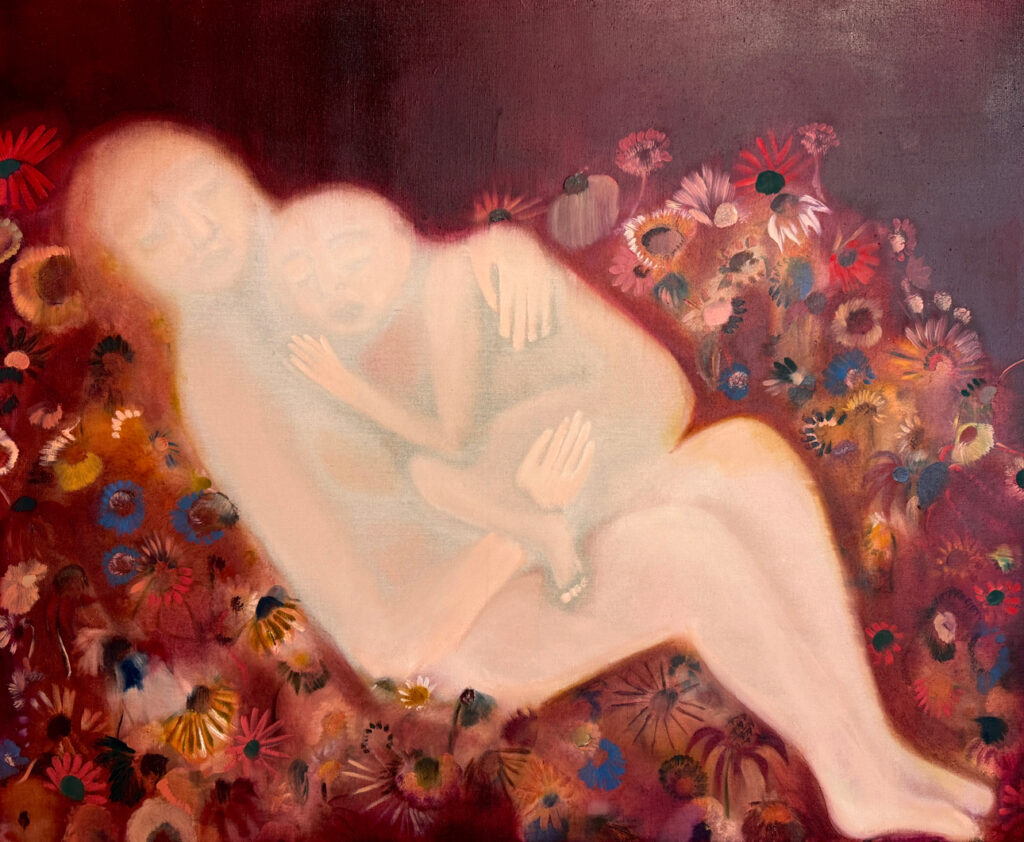
Diane Chappalley
Oil on linen
90x110cm
Image courtesy of Upsilon Gallery
You’ve worked with everyone from emerging artists to institutional icons. What do you learn from artists in the curatorial process?
Evangeline Li: Artists teach me how to listen differently. Whether it’s a young painter experimenting with memory and colour, or an established figure like Marina Abramović’s team navigating ritual and resistance, I find that the most profound insights often come not through language, but through process.
Curating is, at its best, a collaborative act of translation. The artist brings intuition, urgency, and material intelligence. My role is to create a framework where that energy can speak — not be filtered, but revealed. Working closely with artists reminds me that the work is never fixed. It shifts in space, in time, and in relation to the viewer. It also reminds me to remain porous — to be intellectually grounded but emotionally available. Each collaboration reshapes my understanding of artmaking, of authorship, and of care. And that’s what keeps the practice alive for me.
Many of your projects explore cross-cultural narratives, particularly between East and West. Why is this important to your practice?
Evangeline Li: As someone who has lived and worked across Taiwan, China, and the UK, cross-cultural thinking is not just a framework for my work — it’s the lens through which I see the world. My practice is rooted in the belief that cultural production is not static, but fluid — always shaped by movement, exchange, and encounter.
Curating cross-cultural exhibitions allows me to surface tensions, overlaps, and poetic contradictions between visual languages. Whether juxtaposing ink painting with performance art, or exploring how traditional symbolism evolves in digital culture, I see these projects as ways to hold space for multiplicity. In a time of increasing polarisation, I believe this kind of curating can create critical empathy — inviting audiences to step into unfamiliar narratives without reducing them to spectacle or stereotype. That’s the power of art: it resists simplicity. And that’s the responsibility of the curator — to create space where complexity can breathe.
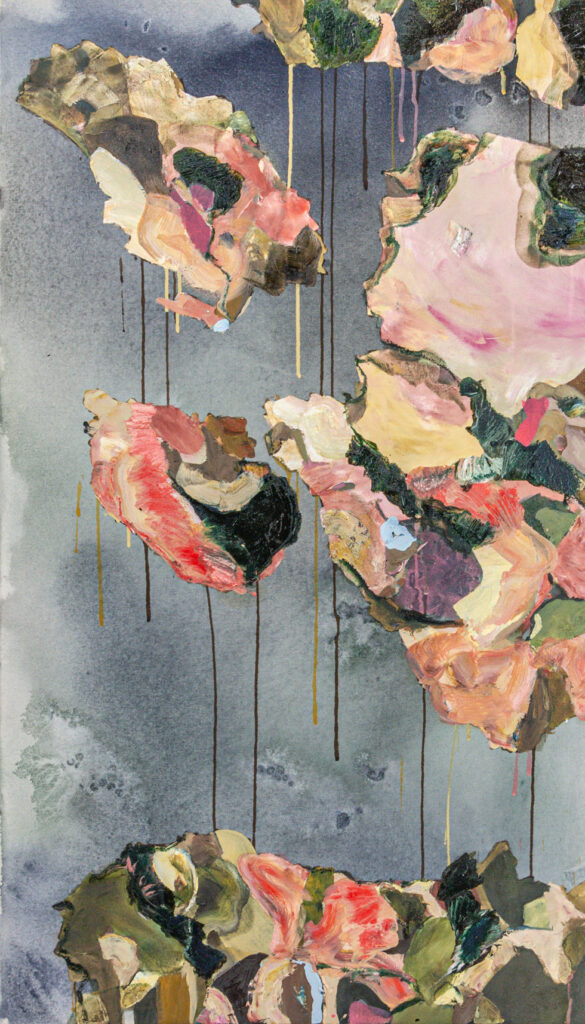
120x70cm
Image courtesy of Upsilon Gallery
Your curatorial language bridges East and West — how do you ensure this dialogue remains balanced and not tokenistic?
Evangeline Li: To me, cross-cultural curation is not about fusion for novelty’s sake — it’s about stewardship. I approach East–West dialogue with both intellectual rigour and cultural sensitivity. It begins with research, but it’s realised through relationships: with artists, scholars, and communities who live these intersections daily.
My aim is not to “represent” but to reveal. To reveal nuances, tensions, and shared inheritances without flattening them into easy narratives. I consider curatorial framing a form of ethics — not just aesthetics — and I constantly ask: Whose voice is being foregrounded? Who is being spoken for, and why?
Balance isn’t a formula — it’s a responsibility. And it’s one I hold at the centre of my practice.
Your recent exhibition at Upsilon Gallery showcased six female artists and echoed the ethos of your ongoing Female Art Salons. What was the curatorial intention behind the show, and how does it connect to your wider mission?
Evangeline Li: The exhibition was born out of a question I’ve been asking for years myself: What happens when women are given not just visibility, but space — real, intentional space — to create, converse, and confront? This show at Upsilon Gallery was a continuation of that ethos, curated to spotlight six female artists working across diverse practices but linked by a shared commitment to material, memory, and meaning.
The showcase sought to map an emotional topography of femininity: transient, luminous, shadowed. Each of the six artists — Ava Grauls, Diane Chappalley, Epona Smith, Evie Mae Jacobs, Guan Guan, and Hannah Lim — offered a fragment of this landscape, rooted in personal histories but collectively resonant. Through abstraction, figuration, craft, and ritual, they explored identity not as fixed, but as fluid and felt.
This exhibition was both a curatorial gesture and a philosophical proposition: that to feel is to know, and that embodied experience is a valid — even urgent — epistemology. It aligns with my wider mission to not only platform underrepresented voices, but to reframe how we engage with them: less through category, more through consciousness.

160 x 70 x 5 cm 2024
Image courtesy of Upsilon Gallery
As someone deeply involved in shaping cultural narratives, how do you stay creatively energised?
Evangeline Li: Travel and conversation. I feed off dialogue — with artists, with texts, with cities. I try to treat every project as a question, not a statement. Curating isn’t just what I do; it’s how I think. It’s a methodology of noticing, assembling, and offering — and that keeps me curious.
Also, I try to preserve what I call “quiet time” — to visit archives, reread essays, or wander through places with no agenda. That’s where unexpected connections emerge. Creative stamina, I’ve learned, isn’t about volume — it’s about rhythm. And part of my rhythm is retreat.
With a practice that moves fluidly between avant-garde performance, classical art history and brand-led projects, do you consider yourself primarily a curator, a cultural strategist — or a fusion of the two?
Evangeline Li: I see myself as both — and purposefully so. For me, curating and cultural strategy are not opposing identities but intertwined modes of thinking. Curation is how I engage with history, aesthetics, and the emotional architecture of experience. Strategy is how I ensure that those experiences resonate beyond a gallery, beyond a moment — into institutions, into markets, into memory.
Whether I worked with the leading museums, art fairs, art institutions, galleries, universities, and luxury brands, I’m constantly asking: What are we really communicating? To whom? And why now? That’s the strategist in me. But it’s grounded in a curatorial sensibility — one that values depth, context, and narrative. I believe that contemporary curators must wear multiple hats — not to dilute their vision, but to expand its reach. We are no longer gatekeepers; we are bridge builders. And that requires as much strategic fluency as it does cultural sensitivity. In this role, we don’t just shape exhibitions — we shape ecosystems.
If you could write a manifesto for your curatorial philosophy in five words, what would they be?
Evangeline Li: Context. Care. Dialogue. Presence. Translation.
These five words shape everything I do — from how I approach an artist’s work, to how I design a space, to how I speak with audiences. They are not static principles, but evolving commitments. Together, they reflect my belief that curating is not only a form of cultural work — it is a way of being in relation to others.
Q3: Collaboration features strongly in your work — with artists, brands, and institutions. What do you look for in a collaborator?
Evangeline Li: Curating is inherently collaborative. No project exists in a vacuum. For me, the best collaborators are those who bring curiosity, respect, and a shared sense of risk. I look for people and institutions who are willing to ask difficult questions and explore new formats — those who see curation as a living, evolving dialogue.
Whether I’m working with a museum, a fashion house, or a young artist, I value collaborators who understand the power of intentionality. It’s not about scale or budget — it’s about alignment of vision and trust in process. The most memorable projects I’ve led weren’t just successful — they felt deeply human.
What advice would you offer to emerging curators navigating today’s art world?
Evangeline Li: Start by defining your voice, not your niche. The art world moves fast — don’t let it rush you into roles you haven’t chosen. Build relationships with artists, not just institutions. Read deeply. Travel when you can. And most importantly, don’t be afraid to bring your personal history into your curatorial logic. That’s where your strength lives.
Also, know that curating is not always glamorous. It’s logistical, emotional, and often invisible work. But it’s also incredibly powerful. You’re shaping how people see, feel, and remember. Honour that responsibility.
©2025 Evangeline Li


